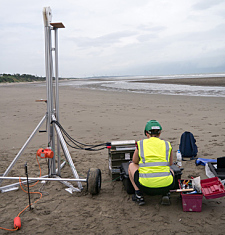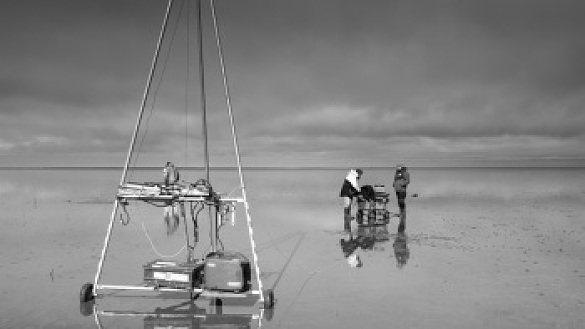Modelling of offshore undersea cables

Fielax GmbH in Bremerhaven is working with the Institute for Statistics of Bremen University to develop a model to determine safe dimensions for offshore undersea cables. The correct design of the dimensions of the cables mitigates the impact of the temperature on the sediment and reduces resource consumption. The project aims to produce a statistical model of the components of the sediment cable temperature model and to arrive at a confidence interval (margin of error) for the cable temperature in real operational conditions.
The benefits to the environment derive from the savings of energy and resources used in the manufacture and use of optimally dimensioned undersea cables and from the assurance that nature conservation rules are complied with (maximum permitted warming of the sediment of 2 Kelvin).
Estimates have shown that offshore wind energy in northern Europe (North and Baltic Seas) could cover up to 15% of total European electricity needs by 2030. A study by the EU’s Intelligent Energy Europe programme found that the total cost of this offshore grid would be around €86 billion. This amount highlights the need to deploy the underwater cables in a way that saves resources and spares the environment.

The project aims to statistically model the components of the sediment cable temperature model and to arrive at a confidence interval (margin of error) for the cable temperature in real operating conditions by using estimates, Monte Carlo and resampling methods.
The environment benefits from the savings in energy and resources in the manufacture and use of optimally dimensioned underwater cables, and from the assurance that nature conservation rules are complied with (2K criterion).
The main aim of the project is to evaluate potential errors in all the variables feeding into the model, and to apply appropriate statistical methods to arrive at a margin of error or confidence interval for the temperatures which need to be determined.
It is essential for the grid operators to be able to estimate the margin of error in the resulting temperatures, since otherwise it is impossible to design the optimal dimension of the cable.
The inversion procedure which is currently used for this purpose is insufficiently accurate due to the actual (random) degree of imprecision in the measurement. In addition to the consideration of this purely arithmetical error, this project also aims to quantify potential breaches of the preconditions.
The project is financed with funding from the European Union and the State of Bremen – by the Senator for Climate Change Mitigation, Environment, Mobility, Urban Development and Housing Construction under the Applied Environmental Research funding programme.

This project focus on innovation an is supported by our heroine Felicia